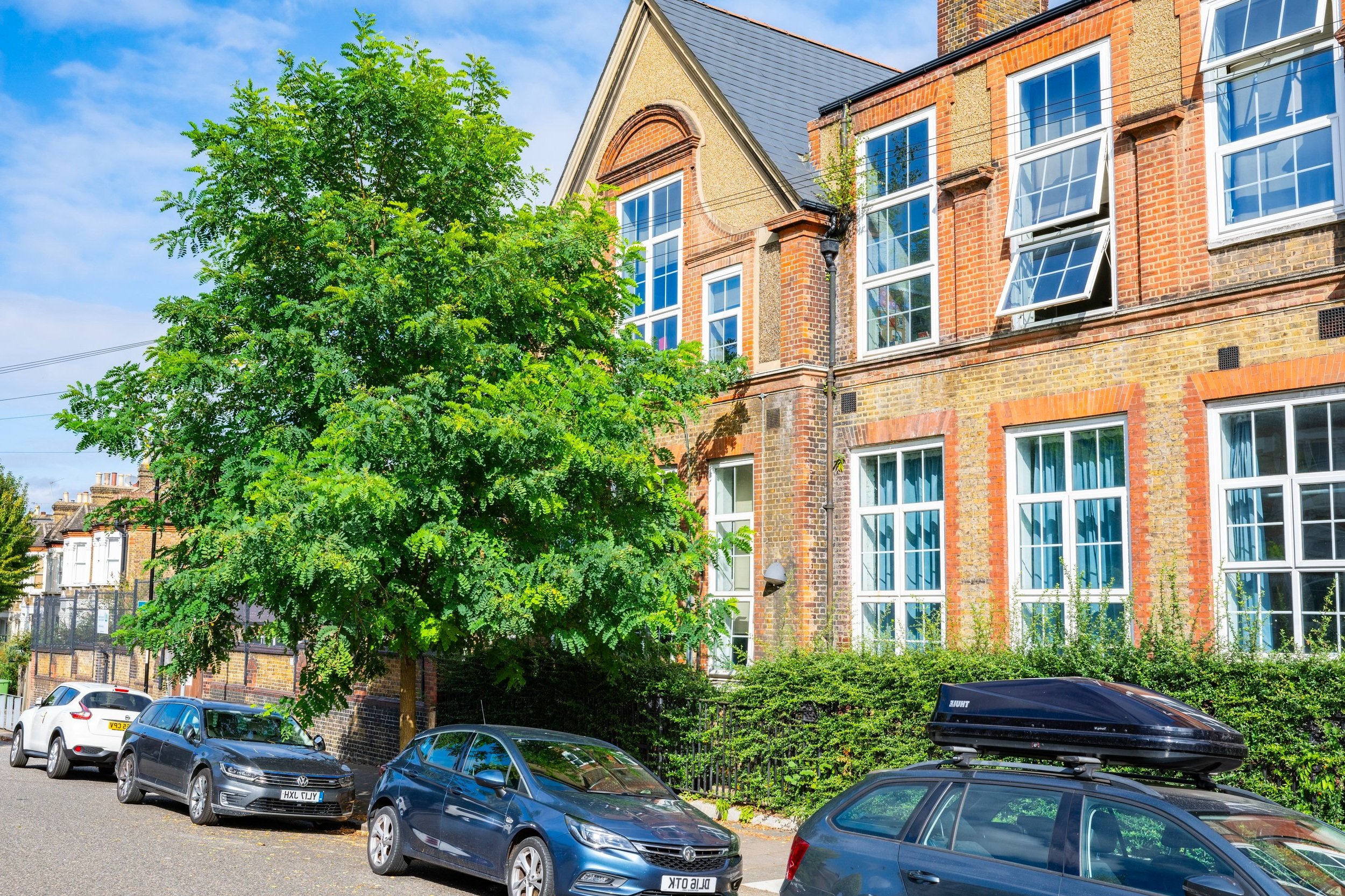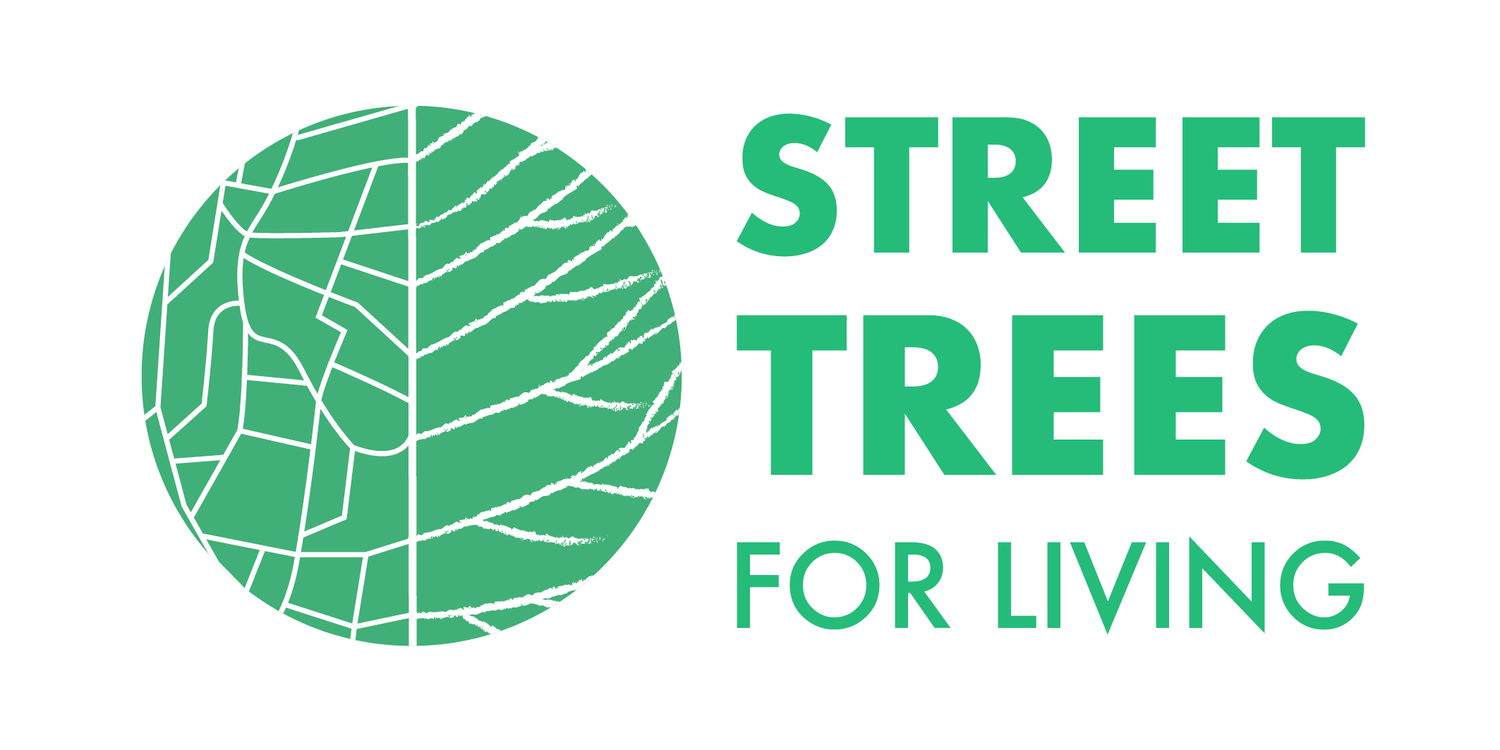

BENEFITS OF TREES
Street trees look after us in a number of ways…
A large number of studies have proven the incontrovertible benefits of planting trees in urban environments. Yes, we really are sure. Read on to find out more!
-
Over 9,000 Londoners are dying early every year as a result of toxic air, according to 2015 statistics by King’s College London provided by the Mayor of London.
Car and lorry exhausts contains significant pollutants, including carbon monoxide (CO), volatile organic compounds (VOC), nitrogen oxides (NOx), and particulate matter (PM).
Exhaust pipe emissions are adding to asthma and other health problems. Trees on streets absorb nine times more pollutants than more distant trees, converting toxic air back into oxygen and other useful and natural gasses.
The UK has one of the world’s highest rates of childhood asthma, with about 15% of children affected and a higher prevalence in lower socio-economic groups in urban areas (Townsend 2007).
Studies show that a barrier created from street trees, along with lower level planting, can more than halve the levels of pollutants behind the barrier, protecting school playgrounds and other areas of open space where the public congregate (Birmingham Institute of Forest Research, the Global Centre for Clean Air Research and Transport for London)
Notes
Extensive research by Lancaster University (Hewitt et al, undated), (Mitchell and Maher, 2009) (Branford et al., 2004; McDonald et al., 2007) (Jim and Chen, 2008) (Bealey et al., 2007; Mitchell and Maher, 2009), (Nowak et al 2006) and (Lovasi et al 2008) has found that trees remove a number of pollutants from the atmosphere, including ozone, nitrogen dioxide and particulates. Different species of tree have different net effects on air quality. -
Trees provide shelter and reduce wind speed, reducing heat loss from buildings during winter. They provide shade in the summer and evapotranspiration of water from the leaves has a cooling effect on the surrounding air. This significantly reduces energy use and costs for A/C in hot weather.
-
Margaret Lipscombe, director of urban programmes at the Tree Council, says trees bring a plethora of benefits to people's lives and support local wildlife; "Not only are trees beautiful but they are practical and encourage biodiversity …tree-lined streets provide wildlife corridors for birds or insects to travel.”
-
The above studies also found evidence that vegetation reduces mental fatigue, which is a known precursor to violent behaviour and numerous studies report that living on tree lined streets increases happiness, creates health benefits and helps to create a sense of community. According to Kathlene Wolf, Social Science researcher at the University of Washington, trees have a significant positive effect on ADHD in adults and teens.
Trees also release phytoncides; essential oils that protect the trees form birds and parasites. When humans breathe these phytoncides in they produce numerous benefits. These benefits help to support our immune system, nervous system, blood glucose levels, reduce inflammation and also help to enhance our mood by reducing cortisol levels
-
Street trees provide cooling shade and can lower air temperature by countering the "heat island" effect of the urban environment, whereby buildings act as storage heaters to absorb heat during the day and release it at night. A temperature difference of between 5-15 degrees is felt when walking under canopied streets. By contrast, tarmac and concrete streets and car parks are known to increase urban temperatures by 3-7 degrees.
-
There is compelling research proving that motorist road rage is diminished in green urban areas versus stark areas. Trees and aesthetics are known to reduce blood pressure, improving overall emotional and psychological health.
-
A 2006 study by the State of Michigan reported that using trees to line roadways brought down average speeds by 7-8 mph. Streets with landscaped centre medians or perimeter street trees affect driver perception of lane width, causing the “edge effect,” which is a psychological prompt to go slower.
-
A 2015 London School of Economics study (K. Gilstad-Haydon & S. R. Meyer) found that for every 10% increase in tree canopy cover, there was a 15% decrease in violent crime and a 14% decrease in property crime. This study replicates the findings of studies in Baltimore Maryland, Portland Oregon, Philadelphia Pennsylvania and the original 2010 study in Chicago by Kuo & Sullivan.
-
Trees absorb the first 30% of most precipitation through the leaf system, allowing evaporation back into the atmosphere. Up to a further 30% of precipitation is absorbed back into the ground and taken in by the root structure, then absorbed and transpired back to the air. Some of this water percolates into the ground water and aquifer. Storm water runoff and flooding potential to urban properties is greatly reduced. One study estimated that for every 5% increase in tree cover area, run-off is reduced by 2% (Coder, 1996)
-
Green spaces attract people for recreation leading to more “eyes on the street,” which in turn provides actual surveillance. Green spaces also act as a “cue to care”, demonstrating to potential criminal threats that residents pay attention and care about their neighbourhood.
-
Hospital patients with views of trees have been found to recover significantly faster than those who cannot see any natural features (Wolf, 1998(d)).
-
Dr Rachel and Dr Stephen Kaplan, both at the University of Michigan in Ann Arbor, conducted a study where they found that desk workers who can see nature from their desks take 23% less time off sick than those who cannot see any nature.
-
Businesses on attractive tree-lined streets show a 12% higher income stream, which is often the essential competitive edge needed for high street store success.

‘Will I live to be five hundred. Will I be what I was supposed to be. Will I be here when you have gone. For your acorn’s acorns to see.’
— 'Acorn's Acorns' by Mark 'Mr T' Thompson - Seven Poet Trees’

